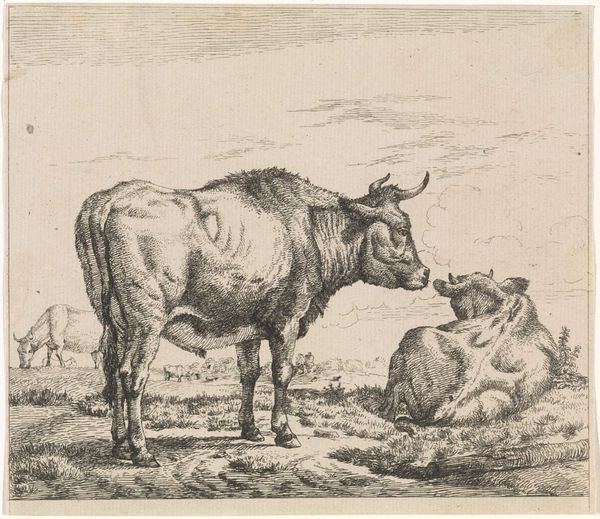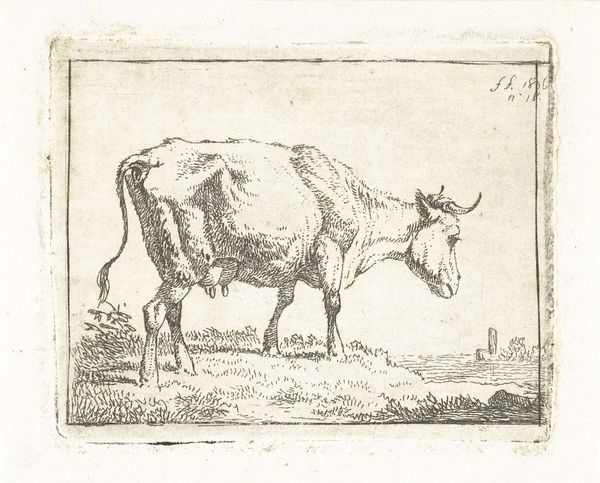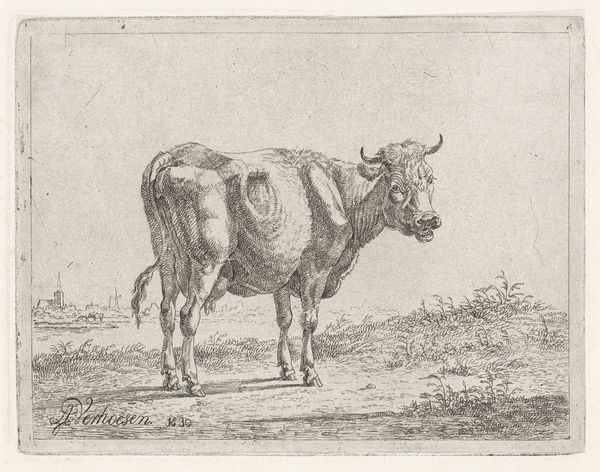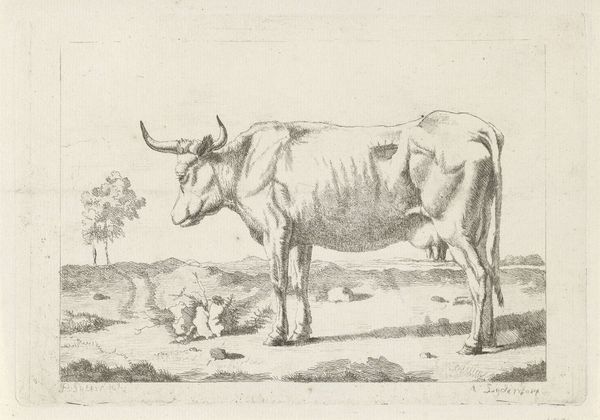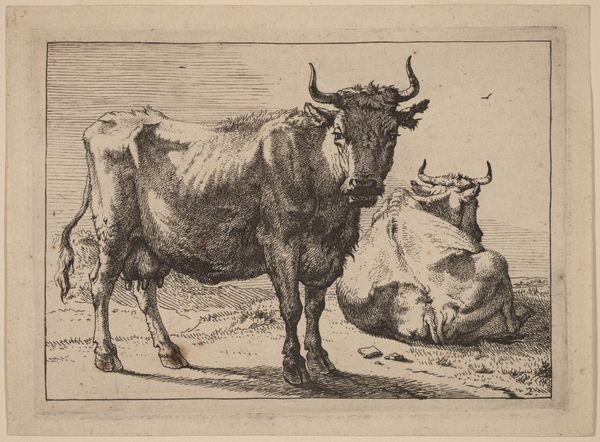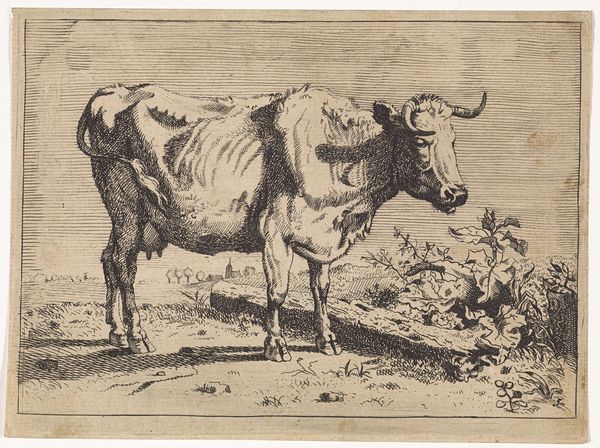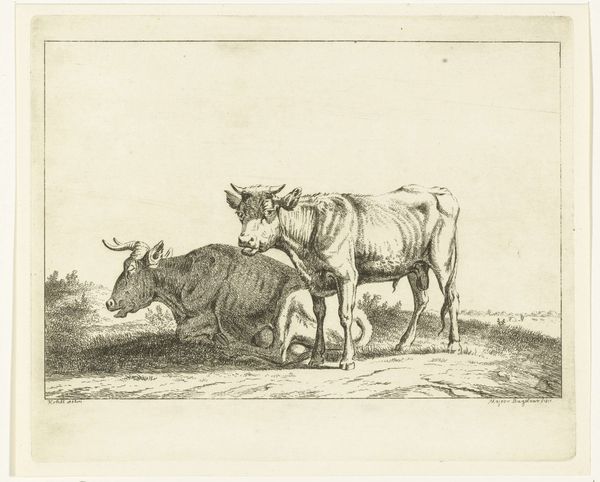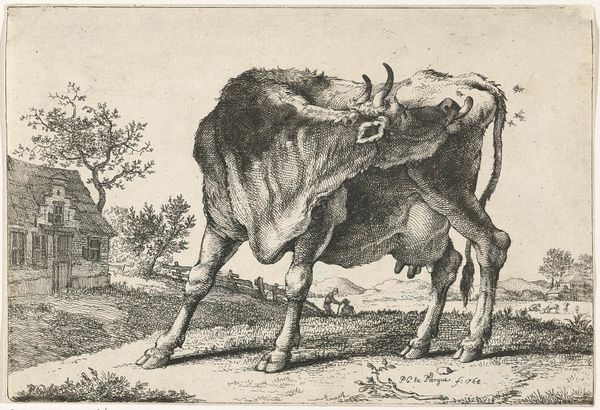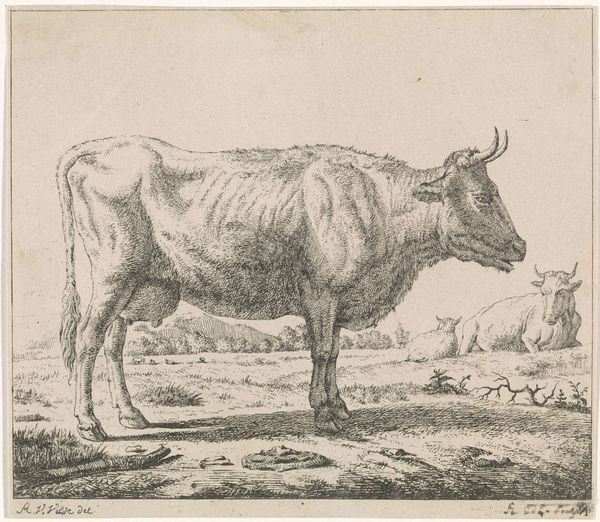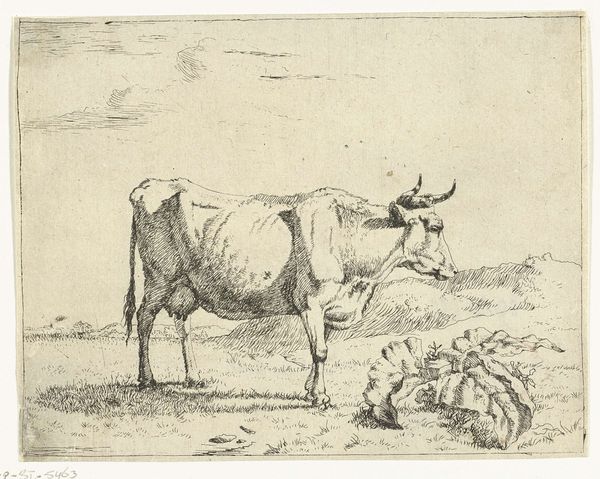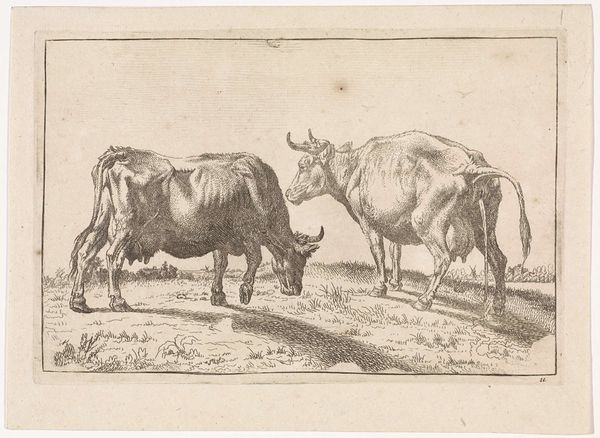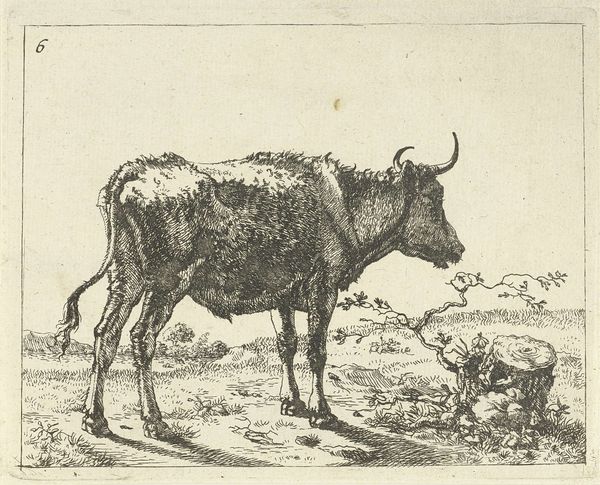
Standing Bull, from Different Animals 1650 - 1672
0:00
0:00
drawing, print, etching
#
drawing
#
dutch-golden-age
# print
#
etching
#
landscape
#
genre-painting
Dimensions: plate: 4 1/2 x 5 3/8 in. (11.4 x 13.6 cm) sheet: 4 7/8 x 5 11/16 in. (12.4 x 14.4 cm)
Copyright: Public Domain
Curator: This etching by Adriaen van de Velde, likely from sometime between 1650 and 1672, shows a pastoral scene titled "Standing Bull, from Different Animals". What strikes you first? Editor: The stark simplicity. It feels almost…archetypal? The bull, particularly, seems to embody a sort of rugged, masculine presence. There is an elemental, symbolic essence distilled. Curator: Van de Velde had an astute ability to capture that essence. Consider that these seemingly simple depictions of livestock spoke to Dutch prosperity. These animals, and the idealized landscapes they occupied, represented stability and wealth for the rising merchant class. Editor: Right, the rise of landscape and genre painting reflecting bourgeois values. Beyond just reflecting, I see these images as actively shaping Dutch identity. The bull becomes more than just livestock, it’s a symbol of national pride, literally embodied wealth grazing in an ordered space. Curator: And there is a distinct tradition embedded. We are recalling potent ancient symbols--the bull is one of civilization's earliest recurring images. Here it gains specificity of time and place, set amongst an observed Dutch pastoral landscape. Van de Velde evokes enduring associations of strength and fertility through this single animal. Editor: I also can't ignore the subtle commentary potentially embedded here, especially regarding class. This wasn't a reality for the urban poor of Amsterdam or other major cities at the time, there is a definite layer of the elite establishing this idealized vision for general consumption. Curator: A tension central to much Golden Age art! This print underscores a crucial role images play: establishing visual vocabularies through which societies define and broadcast idealized values and desired legacies. Editor: This small image ends up saying so much about both our collective past and enduring ideals through animal form and bucolic landscape—a testament to the image's ability to compress complex meanings over centuries. Curator: Yes, the enduring appeal of a humble image can indeed transcend simple aesthetics to mirror—and even mold—collective identities across generations.
Comments
No comments
Be the first to comment and join the conversation on the ultimate creative platform.
